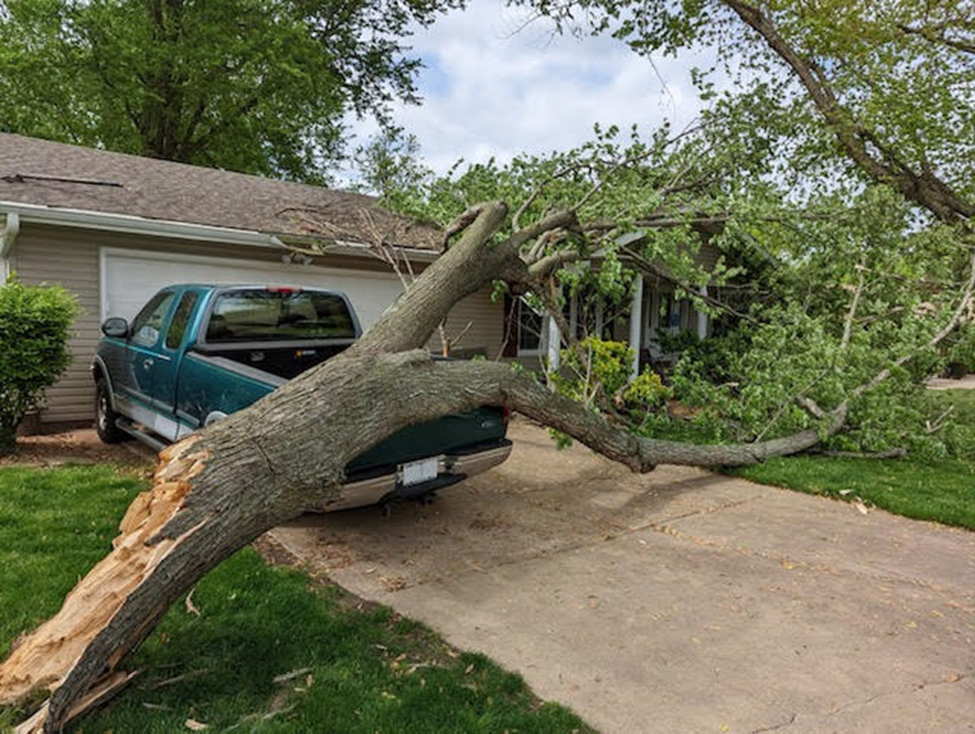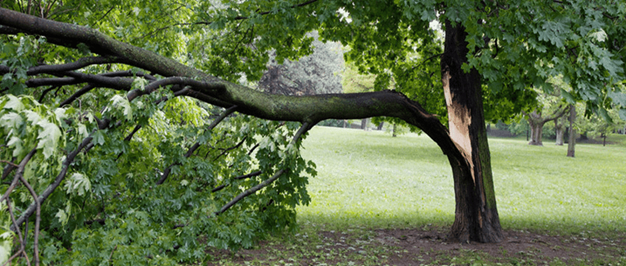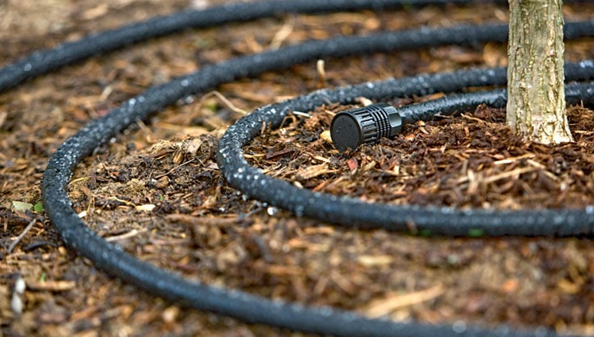Summer is coming to an end and soon cooler weather will be greeting us once again. This year’s summer season has certainly not been without scorching temps and some nasty unexpected storms. In this blog, we will discuss recent storm damage and our pruning backlog, how to mitigate that damage and watering needs of trees.
Recent Storm Damage

Those brutal storms this summer caused a tremendous amount of damage to local trees. Large limbs on houses, trees uprooted, and hanging limbs in tree canopies are just some of the scenarios we have gotten numerous calls about. As arborists, we care for trees, but sometimes our job turns into emergency response when hazardous situations arise due to tree damage. Some damage is inevitable during storms, however, a lot of it can be mitigated.
Across the area, local tree and lawn companies have been working tirelessly to clean up the damage that has ensued in our neighborhoods. Our backlog of work has grown, and we are so grateful for our wonderful customers who have been patient with us to complete the work on our list!
Our current backlog is running about 10-12 weeks for work completed, so If you are in need of tree pruning or removal work for the winter and into next spring, now is the time to get on our schedule.
How to Mitigate Storm Damage

The best practice is prevention. While not all damage can be avoided by high winds, some things can be done to prevent much of it. Here are some practical tips to help your trees from the start:
–Tree Selection- Some species of trees are more prone to breakage due to poor structure and codominant stems. Some trees may be a good selection for our area but planted in the wrong place. “Right Tree, Right Place” is a slogan we live by. An arborist can help you select the best tree for your landscape, the space you have available, and our region that is less prone to pests and diseases.
–Structural Pruning- If you already have a tree on the property with codominant stems, structural pruning or subordinate pruning could help in mitigating potential breakage due to strong winds and storms.
-Cabling- If trees are already mature and structural pruning has not been done previously, the tree could potentially benefit from cabling. Cabling attaches a steel cable in two or more limbs. The goal of this support system is to provide trees with some degree of supplemental support and reduce the risk of potential structural failure.
-Tree Health- Our Plant Health Care department looks at the health of your trees and provides guidance on how to best care for them. Trees that have pest infestations can indeed be weaker and structurally unstable which is just one reason we offer a proactive approach to pest and disease issues.
Give your arborist a call if you would like to learn more about how our services can benefit your trees.
Water Needs for Your Trees

We’ve had some good rains these last few months, but is it enough to rely on Mother Nature to water your trees? Let’s discuss how to best care for your trees with their most basic necessity, water.
Newly planted and young trees require a proper watering schedule. Inadequate watering is the number one killer of newly planted trees. Whether too much or too little, trees will suffer or even die without proper amounts of water. So how do you know if your beloved investments are getting enough H2O? Here are some basics with watering we’d like to share:
- Sprinklers are not sufficient for trees for a few reasons. Sprinklers do not penetrate the earth deep enough making them more suited for turf grass than trees. Another issue with sprinklers is if moisture repeatedly hits the trunk or foliage of trees, it can cause rot, decay, fungal issues, leaf scald, and even decline. Trees should be watered with a drip irrigation system or a hose at the base of the tree in the root zone only.
- Mulch is always a good idea. For many reasons, we recommend wood mulch rings around your trees, but one reason is it helps retain moisture in the soil.
- Too much water? at the end of the blog is a chart of our watering recommendations based on the size of the tree and temperatures outside. One way to test if water is needed is to do the finger test. Stick your finger down into the soil around the root zone. If it is still wet, don’t water just yet. Too much water can suffocate the roots and cause root rot.
- Too little water? Some signs of drought stress are browning leaves that start at the edges. Be sure to keep your trees well-hydrated year-round.
- Water in the winter. Yes, even in the winter. As long as temperatures aren’t freezing, your trees would benefit from watering all year. Winter burn is an issue we see in evergreens during the winter due to drying out as the cold winds hit them. A proper watering schedule can help prevent this damage.
Watering guidelines for your trees
*IF WE GET NO RAIN*
Good slow soaking (10-15 gallons per 5″ diameter)
80+ degree weather=every 3rd day.
65-70 degrees=every 5th day.
50-60 degrees=every 7th day.
35-45 degrees=every 14-15 days.
If you have further questions about how to best care for your trees, get in touch with us, we’d love to help!

